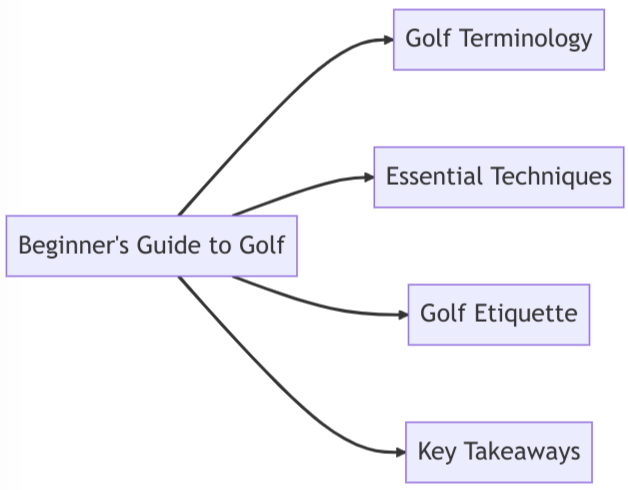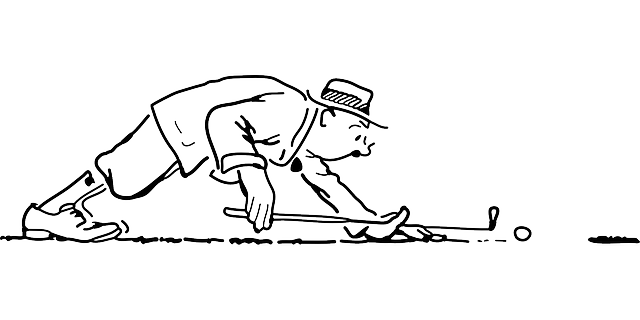Golf Handicaps Explained: Everything You Need to Know
What is a golf handicap? This essential system levels the playing field, allowing golfers of all abilities to compete fairly. In our comprehensive guide, discover how to calculate your handicap, understand key terms like slope rating and course rating, and explore practical examples. Whether you're a beginner or a seasoned golfer, you'll find actionable tips to improve your game and answers to common questions in our FAQ section. Don't miss out on the key takeaways to immediately enhance your golfing experience.
A golf handicap is a numerical measure of a golfer's potential ability. It is used to level the playing field, allowing golfers of varying skill levels to compete fairly against each other. A lower handicap indicates a more skilled golfer, while a higher handicap signifies a less experienced player. Understanding your golf handicap is crucial as it not only allows you to compete on an equal footing with others but also helps you track your progress and improvements over time.
The concept of a handicap makes golf unique among sports. It provides a system where players of differing abilities can compete in a fair and enjoyable manner. This means that whether you're just starting out or have been playing for years, your handicap ensures that you can enjoy competitive rounds with friends or in tournaments without feeling outmatched.
In this guide, we will break down the complexities of the handicap system into easy-to-understand steps. From calculating your handicap index to applying it during play, you will gain the knowledge needed to make the most of this essential golfing tool. With practical examples and clear explanations, you'll be equipped to navigate the handicap system confidently.
So, whether you're looking to improve your scores, understand the intricacies of golf handicaps, or simply enjoy fairer matches with friends, this guide has everything you need. Dive in and discover how mastering your golf handicap can elevate your game and enhance your overall golfing experience.
 Weekend golfers enjoying a day out on a scenic links course by the sea.
Weekend golfers enjoying a day out on a scenic links course by the sea.The Purpose of a Golf Handicap
The primary purpose of a golf handicap is to provide a fair and equitable system for golfers of different skill levels to compete against each other. By adjusting each player's score based on their handicap, the system ensures that even less skilled players have a chance to compete effectively against more experienced golfers. This system promotes inclusivity and encourages golfers to improve their skills while enjoying the competitive aspect of the game.
In addition to fostering fair competition, a golf handicap also serves as a benchmark for personal improvement. By tracking your handicap over time, you can monitor your progress, identify areas for improvement, and set realistic goals for your game. It provides a quantifiable measure of your performance and helps you stay motivated to practice and refine your skills.
Key Terms: Handicap Index, Slope Rating, Course Rating
Understanding the key terms involved in golf handicaps is essential for accurately calculating and utilizing your handicap.
Handicap Index
The handicap index is a portable measure of a golfer’s ability, calculated from their previous scores. It allows golfers to have a consistent and standardized measure of their skill level that can be used on any course. The index ranges from 1 to 54, with a lower index indicating a better player.
Slope Rating
Slope rating is a measure of the relative difficulty of a course for bogey golfers compared to scratch golfers. It is a key factor in determining the course handicap. Slope ratings range from 55 to 155, with 113 being the average difficulty.
Course Rating
Course rating represents the expected score for a scratch golfer on a specific course under normal playing conditions. It is expressed in strokes and is used along with the slope rating to calculate the course handicap. A course with a higher rating is more challenging, even for skilled players.
These terms form the foundation of the golf handicap system and are critical for calculating an accurate handicap that reflects your playing ability on different courses.
How to Calculate a Golf Handicap
Calculating a golf handicap is simpler than it seems, especially with modern apps to help. Here’s how you can understand it easily:
1. Collect Scores: Gather at least five scores from your rounds of golf.
2. Adjust Scores: Adjust your scores according to golf rules. For instance, if your handicap is 20 or less, you can't count more than a double bogey on any hole.
3. Calculate Score Differentials: This step adjusts your scores based on the difficulty of the course and the conditions on the day you played.
4. Average the Differentials: Take the best scores from your collected rounds and find the average.
5. Calculate Handicap Index: Round this average to get your handicap index.
Using a mobile app makes this process even easier as it does all the calculations for you automatically.
Practical Examples of Handicap Calculation
To see how handicaps work in practice, imagine you’re playing on two different courses:
Example 1: Difficult Course
If you play on a challenging course, your handicap will allow you more strokes to account for the difficulty. So, if you typically score higher, the handicap system will adjust your score to reflect the tough course conditions.
Example 2: Easy Course
On an easier course, your handicap will give you fewer additional strokes. This ensures that even if the course is easier, your adjusted score will still be fair.
These examples show how the handicap system helps golfers of different skill levels compete fairly, regardless of the course difficulty.
How to Improve Your Golf Handicap
Improving your golf handicap requires a combination of consistent practice, strategic play, and a focus on both physical and mental aspects of the game. Here are some tips to help you lower your handicap:
1. Consistent Practice: Dedicate regular time to practice different aspects of your game, including driving, iron play, short game, and putting. Consistency is key to improvement.
2. Seek Professional Coaching: Consider hiring a golf coach to provide personalized feedback and guidance. Professional instruction can help you identify and correct flaws in your technique.
3. Play on Varied Courses: Experience playing on different courses to adapt to various challenges and conditions. This will help you develop a more versatile game.
4. Focus on Short Game: Improving your skills around the green can significantly impact your scores. Practice chipping, pitching, bunker shots, and putting to reduce the number of strokes taken in these areas.
5. Track Your Performance: Use apps or scorecards to track your scores and progress. Analyze your performance to identify patterns and areas that need improvement.
6. Set Specific Goals: Establish clear, achievable goals for your game. Whether it’s reducing the number of putts per round or increasing fairway accuracy, having specific targets will keep you motivated and focused.
By following these tips, you can work towards lowering your golf handicap and enjoying greater success on the course.
Key Takeaways
Here are the core actionable takeaways from understanding golf handicaps that you can use immediately:
- It levels the playing field so you can compete fairly which means golfers of all skill levels can enjoy competitive play.
- Track your scores regularly so you can monitor your progress which means you can see your improvement over time.
- Learn how to calculate your handicap so you can understand your true playing ability which means you can set realistic goals.
- Use tools like handicap calculators so you can easily determine your course handicap which means you spend more time playing and less time calculating.
- Focus on improving your short game so you can lower your overall scores which means a more balanced and effective golfing skillset.
- Seek professional coaching so you can get personalized advice which means you can address specific weaknesses in your game.
- Play on varied courses so you can adapt to different playing conditions which means a more versatile and resilient golfing ability.
FAQs about Golf Handicaps
What is a playing handicap?
What is a playing handicap?
A playing handicap is the number of strokes a golfer receives on a specific course on a specific day. It is calculated by applying a percentage allowance to the course handicap, which adjusts the number of strokes for different formats of play such as match play or stroke play.
What is an average golf handicap?
What is an average golf handicap?
For men, the average golf handicap is around 14.2, while for women, it is approximately 27.5. These averages indicate that most golfers will typically shoot a score that is 14 to 27 strokes over the course par.
What is considered a low handicap?
What is considered a low handicap?
A low handicap is generally considered to be in the single digits. Golfers with a handicap below 10 are often seen as very skilled, consistently able to play close to par on most courses.
What is a good golf handicap?
What is a good golf handicap?
A good golf handicap is one that reflects a player's ability to play to their potential consistently. For many amateur golfers, breaking a handicap of 20 is a significant milestone, indicating a solid level of skill and consistency.
By understanding these aspects of golf handicaps, you can better appreciate the system's role in promoting fair competition and personal improvement in the game of golf.






















